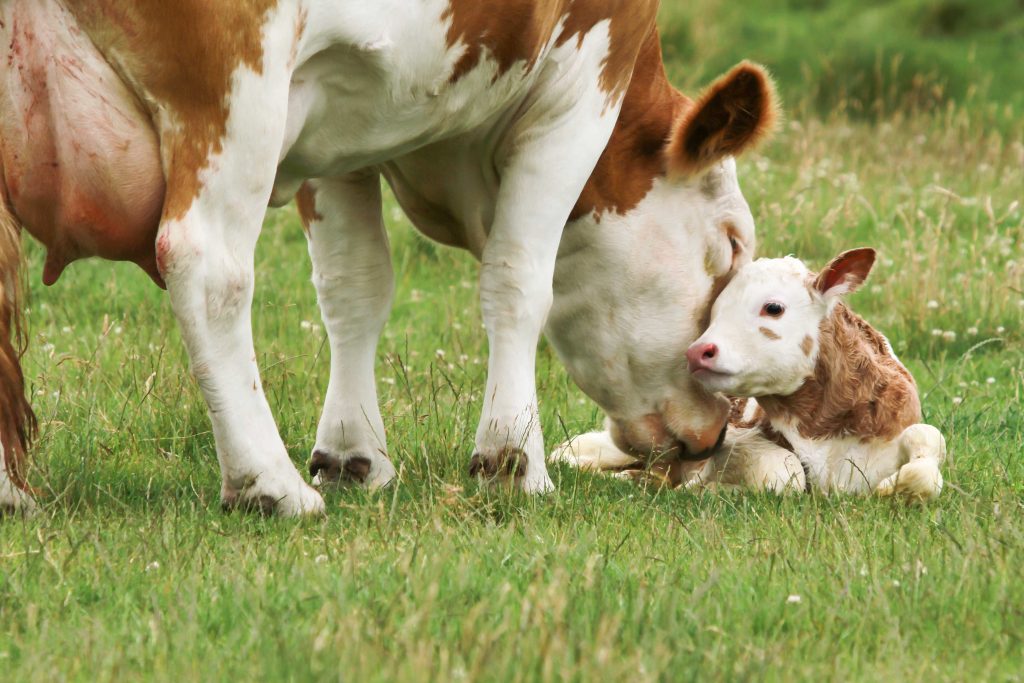The lead up to autumn block calving is arguably one of the most important times of year. If we can get this period optimised, lactating cows stand to be more productive in the next lactation, and calves stand to get a better start in life.
The transition period is pivotal in reducing the risk of calving complications, supporting metabolic health, and increasing milk production. Here’s the cost impact of some of the most common profit-draining challenges that can arise from the transition period.
- Milk fever (clinical) – £200 – £250
- Mastitis – £250 – £300
- Lameness – £180
- Calving index – £5 per day over the calving index target
- Pneumonia – £30 – £80
- Calf scours – £60
- Mortality – £200 – £500
[All costs referenced from AHDB]
Managing the dry cow period is multifaceted and highly dependent on many different variable factors. The good news – there’s plenty we can do to influence this! It’s about breaking it down…
📅 8-12 weeks to calving
Aim to get cows hitting a body condition score (BCS) of 3-3.25 as they are dried-off, and 2.5 to 3 by the time they reach calving. Over fit cows are much more likely face excessive condition loss at calving and a high incidence of post-partum disorders – fatty liver, milk fever, retained cleansing, metritis, and ketosis. Thin cows will have an increased risk of health incidences, poor performance and again, reduced fertility.
Given that autumn calvers are typically bred to thrive on poorer quality grazing or restricted pastures and straw, they can be susceptible to getting over-fat. Mid to late lactation is the biggest opportunity to ‘manipulate’ body condition.
- To assess the BCS of a cow, check the fat cover over the loin, plates and pin bones of the pelvis and tail areas using your hand.
- Thin cows can gain 0.3kg/day off 1-3kg/day of a low protein/cereal based concentrate for 3 months. If cows are still too thin at drying off, they can gain 0.4kg/day off 1.5kg of cereal of concentrate feed for 3 – 4 weeks. Fat cows can have their concentrates reduced or removed and high energy forage diluted with straw up until mid-way through drying off.
- Milk any thin cows once a day but continue to feed them twice a day; keeping them in the main milking herd but clearly marked. Consider drying-off thin cows earlier to allow for recovery of some during the dry period. For over-conditioned cows, consider milking them for a longer period.
- And finally…do not make any dietary changes in the later stages of the dry period, as this can adversely impact on calf or udder development, as well as metabolic health which can lead to production and fertility challenges.
📅 6-8 weeks to calving
Dry cows off with sufficient time for them to repair from the last lactation and prepare for the next. Colostrum production begins as soon as 6-8 weeks prior to calving, and around 60% of all early lactation mastitis originate from the dry period!
- Avoid drying off at milking, and avoid trimming tails and hooves at the same time.
- Thoroughly clean your hands and arms and wear a fresh pair of disposable gloves, replacing between each cow.
- Pre-dip with a fast-acting disinfectant for 30+ seconds.
- Wipe the teats that are furthest away first, using fresh paper for each teat to get it spotless.
- Never let go of the teat – have an assistant prepare and pass the tubes to you.
- If administering antibiotics, massage the antibiotic up the teat canal and towards the udder.
- Avoid the sealant being forced up into the udder by pinching the teat and removing the tube before letting go.
- Apply a post-milking dip or spray.
- Make dried-off cows stand in a clean yard for at least 30 minutes before moving to dry cow accommodation or pasture.
- Check udders daily for signs of mastitis.
Before feeding dry cows’ silage, do a forage analysis to ensure optimum fibre length to ensure rumen fill, counter any reduction in intakes, and minimise displaced abomasum’s after calving. Once we know the status of the forage we are feeding to our dairy cows, we can adjust the energy and protein levels to get body condition optimal at calving.
📅 1-3 weeks to calving
- The nutrient demand of the rapidly growing foetal calf is now at its highest. With dry matter intake (DMI) reducing rapidly due to less space for the rumen, it is important to make sure that you are supplying a moderately energy dense diet to make up for reduced intakes to help meet energy demands of the cow.
- Consider separating cows into a ‘close calving pen’ to allow cows to be more comfortable and to help reduce stress.
- If cows are more mature, are holding large or multiple calves, haven’t reached optimal BCS, and/or have a history of low calcium in previous calving’s, offer a dose of ANIMAX EasyCal+. .
📅 At calving
- Monitor cows closely for any retained cleansing (this should pass within 12–24 hours of calving), appetite and temperature. A cow’s ideal temperature is between 38.6-38.8 degrees centigrade.
- Ensure you meet the energy and protein demands of a newly calved cow, which has now doubled from the pre-calving demand. This is vital in maintaining milk production, reducing the risk of negative energy balance, and promote an optimal recovery after giving birth – particularly in heifers. Consider rehydration powders to encourage water and subsequently dry matter intake.
📅 1-week after calving
Don’t take your finger off the pulse! Attention to the newly calved cow’s health is still vital, not only for this lactation but for the next. Providing your cows with a diet that meets energy, mineral and trace element requirements will allow your cow to get on track that will result in good yield, fertility, and performance.
How to build trace element reserves with precision
From drying off to early lactation, cows often experience a 25-40% ‘dip’ in immunity, making them more prone to the health challenges that get in the way of productivity. One of the key reasons being that the unborn calf increases in weight and size by 75-80% during the last three months of pregnancy. This impacts on ‘rumen fill’ and putting a greater pressure on the cow.
In most cases, grass and forage alone does not offer enough trace elements to satisfy the needs of the cow and calf during the transition period. Cobalt, copper, iodine and selenium are essential for the digestive, immune, and reproductive systems to function properly. Not supplying enough trace elements can manifest as costly clinical or subclinical health and production challenges. Supplying more than enough will either by-pass what an animal can physically absorb or even cause toxicity.
Meaning that precision supplementation is key.
Is ANIMAX Tracesure® Cattle XL right for you?
Featuring patented waxed-groove diffusion technology, the ANIMAX Tracesure® Cattle XL bolus is the form of trace element supplementation you can count on…
- ENOUGH IN ONE APPLICATION FOR >500KG COWS, so you don’t have to worry about it again for up to 6 months.
- CONTROLLED AND CONSISTENT SUPPLY, so you can be sure that every cow is getting enough trace elements during the transition.
- SUPERIOR RUMINAL RENENTION, so you’re unlikely to see any unspent boluses on the ground.
- AVAILABLE WITH A COPPER BOLUS MADE IN-HOUSE, so you know that the specific parameters for optimal bioavailability are met.
- OFFERING HIGH LEVELS OF TWO TYPES OF IODINE, so they have an immediate and long term cover.



Pingback: Autumn calving: precision trace element nutrition to achieve a better transition - Carr's Group